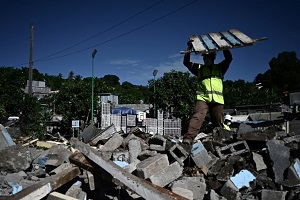
By Hajira Khota
Unprecedented rain has saturated large areas of South Africa’s most important farming regions, causing floods and crop devastation and adding to concerns that climate change is making weather cycles more irregular.
Due to La Nina, which changes ocean currents and normally results in above-average rainfall in southern Africa, heavy rains were forecast this season. However, the severity of the rain, which comes just a few years after some of the worst droughts on record, highlights the unpredictability of weather as greenhouse gases in the atmosphere affect the Earth’s climate.
Speaking to Radio Islam International; Andrea Campher, Risk and Disaster manager for Agri SA says that farmers have suffered as a result of the severe rains include record-high input costs such as fertiliser and petrol
“We’ve got reports that some producers in some regions have seen 100 percent crop losses, and because we’re nearing the end of the planting season, growers won’t be able to replant”.
The government has declared a national disaster, which is a legal classification that allows financial and humanitarian relief to be released, citing death, floods, and infrastructure damage as reasons.
Campher says these analyses are necessary before a national catastrophe may be declared. Funds will now be redirected inside the government to solve the tragedy, with road infrastructure rehabilitation taking precedence.
“The recent rains have come as a welcome relief after a six- to nine-year drought. However, they have put harvests in jeopardy and caused infrastructure damage”.
[LISTEN] to the podcast here







0 Comments